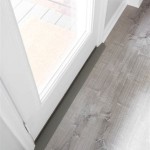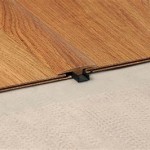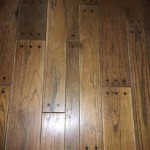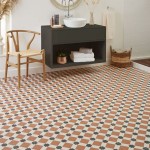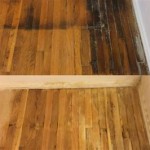White Pine Flooring: A Comprehensive Guide
White pine flooring, derived from the Eastern White Pine tree (Pinus strobus), has been a popular choice for residential and commercial spaces for centuries. Its inherent characteristics, workability, and aesthetic appeal contribute to its enduring popularity. This article provides a detailed overview of white pine flooring, covering its properties, benefits, installation, maintenance, and considerations for its suitability in various applications.
Eastern White Pine is native to North America, growing primarily in the northeastern United States and southeastern Canada. Historically, it was a vital resource for construction, shipbuilding, and various other industries. Its straight grain, lightweight nature, and ease of processing made it highly desirable. Today, that legacy continues with white pine flooring, offering a blend of tradition and practicality.
Understanding the Properties of White Pine
White pine is classified as a softwood, although its density varies depending on the age and growth conditions of the tree. Its Janka hardness rating, which measures the resistance of wood to denting and wear, typically falls between 380 and 420 lbf (pounds-force). This places it considerably lower than hardwoods like oak or maple. However, this characteristic contributes to its softer feel underfoot and its unique aging process, where minor dents and imperfections accumulate over time, adding character to the floor.
The color of white pine ranges from creamy white to light yellowish-brown, often with subtle variations and knots that add visual interest. The wood readily accepts stains and finishes, allowing for a wide range of aesthetic customization. Over time, exposure to light can cause white pine to develop a warm, amber tone, enhancing its natural beauty.
Dimensional stability is an important consideration for any type of wood flooring. White pine exhibits moderate dimensional stability, meaning it is susceptible to expansion and contraction with changes in humidity and temperature. Proper acclimation prior to installation is crucial to minimize warping, cupping, or gapping. This involves storing the flooring materials in the installation environment for several days or weeks, allowing them to adjust to the local conditions.
Another notable property of white pine is its excellent insulation value. Wood in general is a good insulator, and white pine's cellular structure further enhances this characteristic. This can contribute to energy savings by helping to maintain consistent temperatures within a building, reducing the load on heating and cooling systems.
Benefits of Choosing White Pine Flooring
Several advantages make white pine flooring an attractive option for various applications:
Aesthetic Appeal: The natural beauty of white pine, with its light color, unique grain patterns, and characteristic knots, creates a warm and inviting atmosphere. Its ability to accept stains and finishes allows for customization to match virtually any design style, from rustic to contemporary.
Comfort Underfoot: The softer nature of white pine provides a comfortable and forgiving surface to walk on. This can be particularly beneficial in areas where people spend a significant amount of time standing or walking.
Workability: White pine is relatively easy to cut, nail, and sand, making it a favorite among carpenters and DIY enthusiasts. This ease of workability can contribute to lower installation costs and faster project completion times.
Cost-Effectiveness: Compared to many hardwood flooring options, white pine is often more affordable, making it an attractive choice for budget-conscious homeowners. However, it's important to consider the potential need for more frequent maintenance and refinishing due to its softer nature.
Sustainability: White pine is a readily renewable resource, and many suppliers source their wood from sustainably managed forests. Choosing white pine flooring can be a more environmentally responsible option compared to using exotic or slow-growing hardwoods.
Historical Authenticity: For those seeking to replicate the look and feel of historic homes, white pine flooring offers an authentic and traditional choice. It was widely used in colonial-era buildings and provides a link to the past.
Light Reflectance: The light color of white pine flooring reflects light effectively, making rooms appear brighter and more spacious. This can be particularly beneficial in areas with limited natural light.
Installation and Maintenance Considerations
Proper installation is paramount for the long-term performance and appearance of white pine flooring. The subfloor must be clean, level, and dry. Acclimation of the flooring materials to the installation environment is critical to prevent warping or gapping. A moisture meter should be used to verify that both the subfloor and the flooring have reached an acceptable moisture content level.
White pine flooring can be installed using various methods, including nailing, gluing, or floating. The choice of method depends on the specific product, the subfloor material, and the installer's preferences. For nail-down installations, ring-shank nails are recommended to provide a secure hold and prevent loosening over time.
Given its softer nature, white pine flooring requires more frequent maintenance than hardwood options. Regular sweeping or vacuuming is essential to remove dirt and debris that can scratch the surface. Use a soft brush attachment on vacuums to avoid damaging the wood. Avoid using harsh chemicals or abrasive cleaners, as these can strip the finish and damage the wood.
Damp mopping with a mild wood floor cleaner is generally acceptable, but it's crucial to avoid excessive moisture. Always wring out the mop thoroughly to prevent water from seeping into the seams between the boards. Standing water should be wiped up immediately.
Applying a protective finish is essential to enhance the durability and longevity of white pine flooring. Polyurethane finishes are a popular choice, offering excellent protection against wear, scratches, and stains. However, they can sometimes impart a plastic-like appearance. Oil-based finishes penetrate the wood and provide a more natural look and feel, but they may require more frequent reapplication.
Periodic refinishing may be necessary to restore the appearance of white pine flooring and remove scratches or wear marks. The frequency of refinishing depends on the amount of foot traffic and the care given to the floor. Sanding and refinishing white pine requires a delicate touch due to its softer nature. Professional refinishers experienced with softwoods are recommended to avoid damaging the wood.
Consider placing rugs or mats in high-traffic areas to protect the flooring from excessive wear. Use furniture pads under the legs of chairs and tables to prevent scratches. Avoid wearing shoes with cleats or high heels on the flooring, as these can cause indentations.
Suitability and Applications
White pine flooring is well-suited for a variety of applications, particularly in residential settings. Its aesthetic appeal and comfortable feel make it a popular choice for living rooms, bedrooms, and dining rooms. It can also be used in hallways and staircases, although these areas may require more frequent maintenance due to higher foot traffic.
In commercial settings, white pine flooring is often used in retail stores, restaurants, and offices where a warm and inviting atmosphere is desired. However, its softer nature may make it less suitable for areas with very heavy foot traffic or where spills are common. Protective finishes and regular maintenance are particularly important in commercial applications.
White pine flooring is a good choice for historic homes or restoration projects where maintaining authenticity is important. It provides a historically accurate look and feel while offering the benefits of modern finishing techniques.
When selecting white pine flooring, it's important to consider the grade of the wood. Higher grades have fewer knots and imperfections, resulting in a more uniform appearance. Lower grades have more knots and character marks, which can add to the rustic charm of the floor. The choice of grade depends on the desired aesthetic and the budget.
The width of the flooring boards also affects the overall appearance. Wider boards create a more spacious and open feel, while narrower boards provide a more traditional look. The choice of board width depends on the size and layout of the room and the desired design style.
Ultimately, the decision of whether or not to use white pine flooring depends on a careful assessment of the project requirements, the desired aesthetic, the budget, and the level of maintenance that can be provided. While it may not be as durable as some hardwood options, its unique properties, affordability, and aesthetic appeal make it a worthwhile consideration for many applications.

Eastern White Pine Wide Plank Flooring Vermont
Classic Plank Eastern White Pine Floooring

The Enduring Beauty Of Soft Eastern White Pine Flooring Carlisle Wide Plank Floors

Hit Or Miss Eastern White Pine Flooring Carlisle Wide Plank Floors

Wide Plank Eastern White Pine Flooring For Every Interior Style Nelma
Classic Plank Eastern White Pine Floooring

Eastern White Pine Wide Plank Flooring Ponders Hollow Custom Wood Millwork Westfield Ma

Wide Plank Heart Pine Flooring From Vermont

Wide Pine Plank Floors Shiplap Stonewoods Com

Pine Eastern White Vermont Hardwoods
Related Posts

